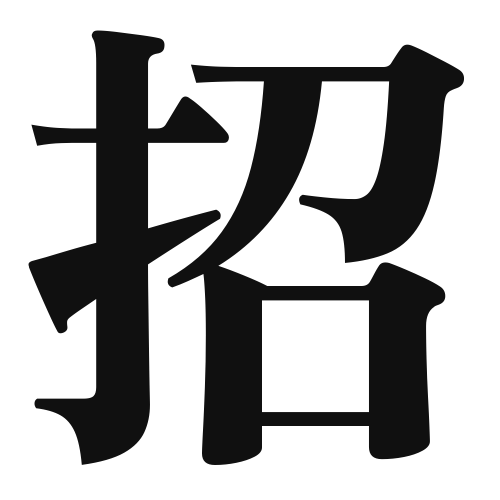1. Overview of Meaning
The kanji “招” (shou) means “to invite” or “to beckon.” It conveys the idea of calling someone over or welcoming them, often used in contexts related to invitations or requests.
2. Formation and Radical
Formation of the Kanji: The kanji “招” is a compound character (会意文字) that combines elements to convey its meaning. It consists of the radical “手” (hand) on the left, indicating an action performed by the hand, and “召” (shou) on the right, which relates to calling or summoning.
Radical: The radical of “招” is “手” (te), which means “hand.” This radical is commonly associated with actions performed by the hand.
3. Examples of Usage
Common Words and Phrases: Some frequently used words that include “招” are:
- 招待 (shoutai) – invitation
- 招集 (shoushuu) – gathering or calling together
Example Sentences in Daily Conversation:
- 友達を招待しました。 (Tomodachi o shoutai shimashita.) – I invited my friend.
- 会議に招集されました。 (Kaigi ni shoushuu saremashita.) – I was called to the meeting.
4. Synonyms and Antonyms
Similar Kanji: A kanji with a similar meaning is “呼” (ko), which means “to call.” However, “呼” is more general and can refer to calling out to someone, while “招” specifically implies an invitation or beckoning.
Opposite Kanji: An antonym for “招” could be “拒” (kyo), which means “to refuse” or “to reject,” indicating the opposite action of inviting someone.
5. Cultural and Historical Background
Relation to Japanese Culture: The concept of “招” is significant in Japanese culture, especially in the context of hospitality and social gatherings. Inviting guests is considered an important aspect of Japanese etiquette.
Proverbs and Idioms: One common saying is “招かれざる客” (manekarezaru kyaku), which translates to “an uninvited guest,” highlighting the importance of invitations in social settings.
